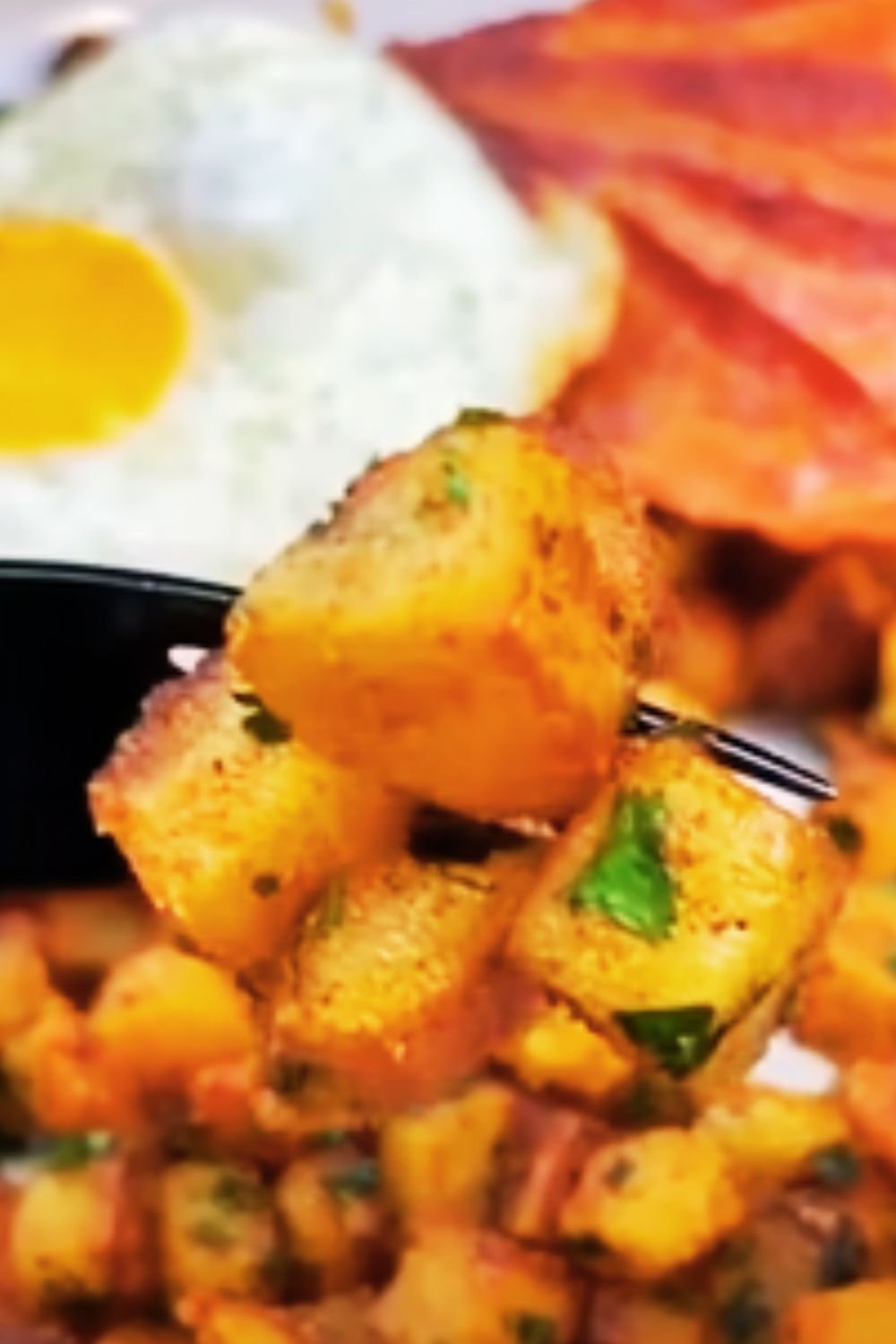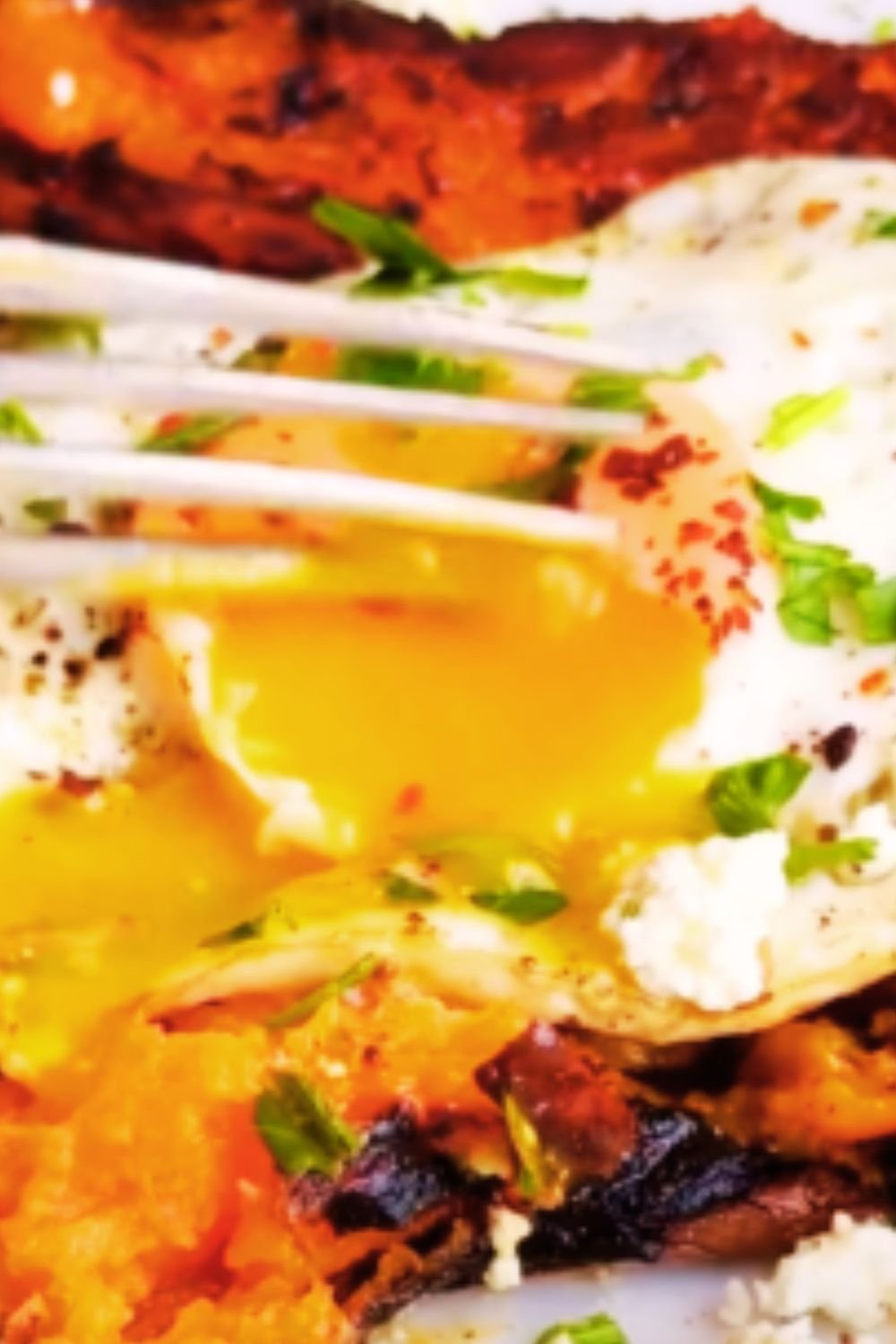There’s something magical about the perfect breakfast potato that transforms an ordinary morning into something extraordinary. I’ve spent countless mornings perfecting my technique, and I’m excited to share what I’ve learned about creating these crispy, golden beauties that’ll have your family begging for seconds.
When I first started making breakfast potatoes, mine were either mushy disasters or burnt offerings that belonged in the trash. Through trial and error, I discovered the secrets that separate mediocre breakfast potatoes from the truly bangin’ ones that make people stop mid-conversation to ask for the recipe.
What Makes Breakfast Potatoes “Bangin'”?
The difference between good and great breakfast potatoes lies in understanding the science behind achieving that perfect contrast of textures. You want exteriors so crispy they practically shatter when you bite into them, while the interiors remain fluffy and tender like little potato clouds.
Key Characteristics of Perfect Breakfast Potatoes:
- Golden-brown, crispy exterior with audible crunch
- Creamy, fluffy interior that melts in your mouth
- Well-seasoned throughout, not just on the surface
- Evenly cooked pieces with no burnt or raw spots
- Aromatic herbs and spices that complement rather than overpower
Essential Techniques for Success
The Pre-Cooking Method
I’ve tried every method under the sun, and pre-cooking your potatoes is absolutely non-negotiable. This step ensures your potatoes cook evenly and develop that coveted crispy exterior without burning.
Parboiling Method:
- Cut potatoes into uniform pieces (about 1-inch cubes)
- Place in cold, salted water and bring to a gentle boil
- Cook for 8-10 minutes until fork-tender but not falling apart
- Drain thoroughly and let steam evaporate for 2-3 minutes
Microwave Method (My Quick Alternative):
- Pierce whole potatoes with a fork
- Microwave on high for 4-5 minutes per potato
- Let cool, then cube and proceed with recipe
The Drying Technique
Here’s where most people go wrong. Moisture is the enemy of crispiness. After parboiling, I spread my potato cubes on a clean kitchen towel and pat them completely dry. Any lingering moisture will create steam in the pan, preventing that golden crust we’re after.
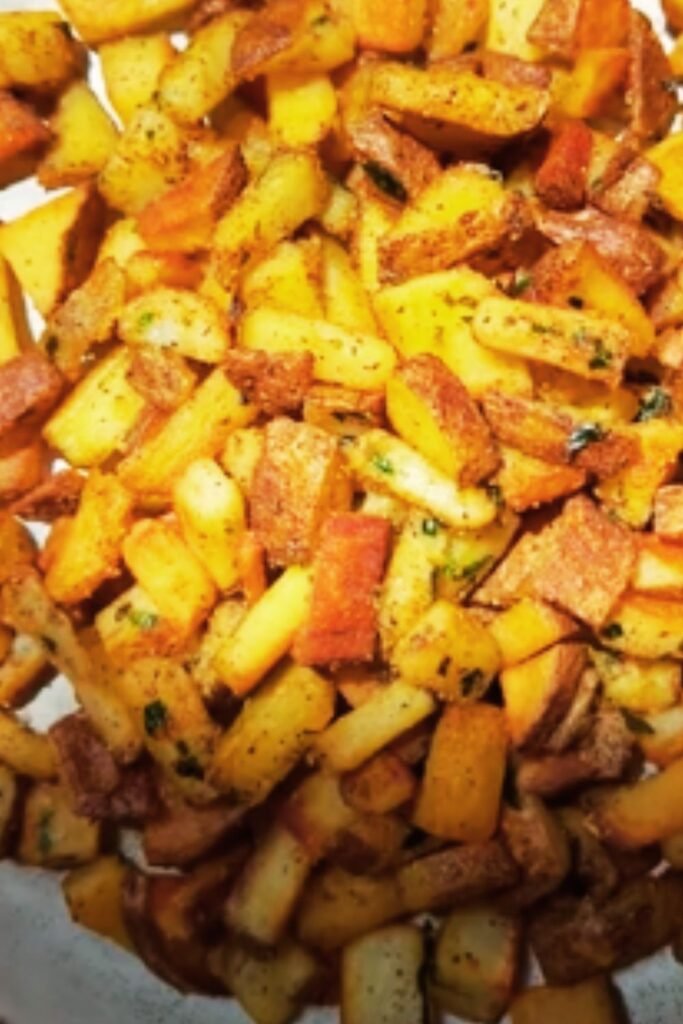
My Go-To Bangin’ Breakfast Potatoes Recipe
Ingredients
| Ingredient | Amount | Purpose |
|---|---|---|
| Russet potatoes | 2 lbs, cubed | Starchy base for fluffiness |
| Vegetable oil | 3 tablespoons | High smoke point for crisping |
| Butter | 2 tablespoons | Rich flavor and browning |
| Yellow onion | 1 medium, diced | Sweetness and aroma |
| Bell pepper | 1, any color, diced | Color and mild pepper flavor |
| Garlic powder | 1 teaspoon | Savory depth |
| Paprika | 1 teaspoon | Color and smoky flavor |
| Salt | 1 teaspoon | Essential seasoning |
| Black pepper | ½ teaspoon | Heat and complexity |
| Fresh rosemary | 1 tablespoon, chopped | Aromatic herb note |
Step-by-Step Instructions
Preparation Phase:
- Wash and scrub potatoes thoroughly, leaving skins on for extra texture and nutrition
- Cut into uniform 1-inch cubes to ensure even cooking
- Parboil in salted water for 8-10 minutes until just fork-tender
- Drain completely and spread on kitchen towels to air dry
Cooking Phase:
- Heat vegetable oil in a large cast-iron skillet or heavy-bottomed pan over medium-high heat
- Add dried potato cubes in a single layer, avoiding overcrowding
- Let cook undisturbed for 4-5 minutes to develop the first crust
- Flip potatoes and add butter, allowing it to foam and brown
- Add onions and bell peppers, cooking for another 3-4 minutes
- Season with salt, pepper, garlic powder, and paprika
- Continue cooking, stirring occasionally, until all sides are golden brown
- Sprinkle with fresh rosemary in the final minute
Potato Variety Guide
| Potato Type | Best Use | Texture Result | Cooking Notes |
|---|---|---|---|
| Russet | Crispy exteriors | Fluffy inside, crispy outside | High starch content perfect for crisping |
| Yukon Gold | Balanced texture | Creamy with good browning | Lower starch, holds shape well |
| Red potatoes | Firm texture | Dense, waxy texture | Great for those who prefer less fluffy interiors |
| Fingerlings | Gourmet presentation | Varies by variety | Beautiful colors, cut lengthwise |
Seasoning Combinations That Rock
Classic American Diner Style
- Salt, pepper, garlic powder, paprika
- Fresh or dried chives
- Optional: crispy bacon bits
Southwest Fiesta
- Cumin, chili powder, smoked paprika
- Fresh cilantro and lime zest
- Diced jalapeños for heat
Mediterranean Herb Garden
- Dried oregano, thyme, rosemary
- Lemon zest and fresh parsley
- A sprinkle of parmesan cheese
Cajun Kick
- Cajun seasoning blend
- Cayenne pepper to taste
- Green onions and bell peppers
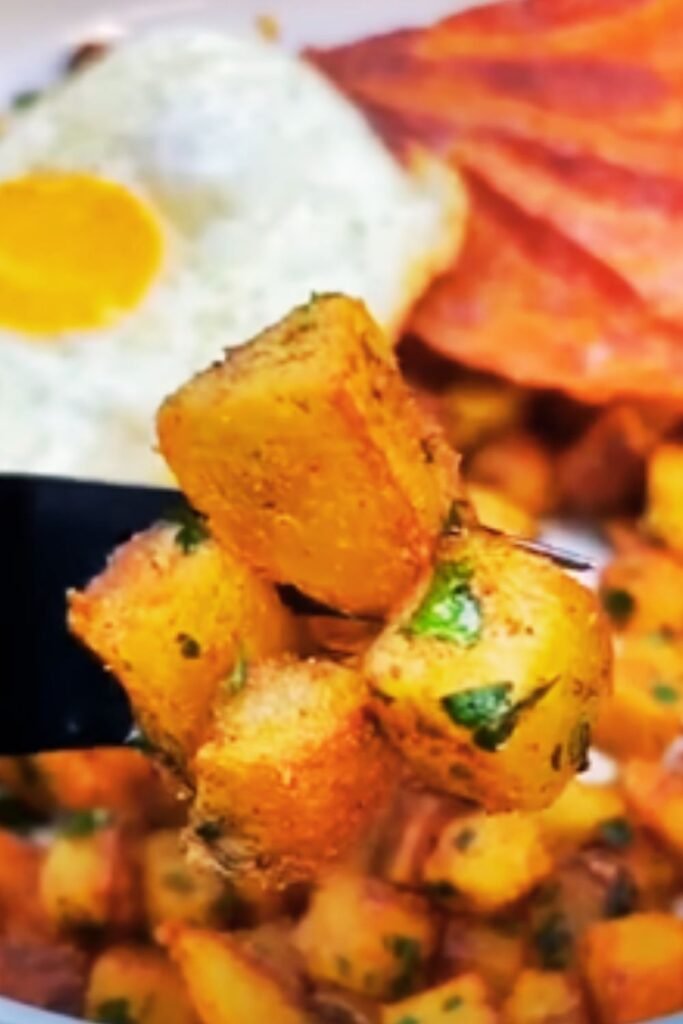
Common Mistakes and How to Avoid Them
The Soggy Potato Tragedy
Nothing’s more disappointing than breakfast potatoes that taste like they were steamed rather than fried. This happens when:
- Potatoes aren’t dried properly after parboiling
- Pan is overcrowded, creating steam
- Heat is too low, causing potatoes to cook in their own moisture
My Solution: Always dry your potatoes thoroughly, cook in batches if necessary, and maintain medium-high heat throughout cooking.
The Burnt Outside, Raw Inside Disaster
I’ve been there – beautiful golden potatoes that crunch perfectly until you bite into a raw center. This occurs when:
- Heat is too high initially
- Potatoes weren’t pre-cooked adequately
- Pieces are too large or unevenly cut
My Solution: Pre-cook until fork-tender, maintain consistent medium-high heat, and cut uniformly.
The Bland and Boring Blues
Potatoes are like blank canvases – they need proper seasoning to shine. Under-seasoned potatoes happen when:
- Salt is added too late in the process
- Insufficient seasoning overall
- Relying only on surface seasoning
My Solution: Season the parboiling water, season during cooking, and taste-test throughout the process.
Advanced Techniques for Next-Level Results
The Double-Fry Method
For the ultimate crispy texture, I sometimes employ a restaurant technique:
- First fry: Cook potatoes until just golden
- Remove and drain on paper towels
- Second fry: Return to hot oil for final crisping
The Smashed Potato Variation
After parboiling, gently smash each potato piece with a fork before frying. This creates more surface area for maximum crispiness.
The Herb Oil Infusion
Create an herb-infused oil by gently heating your cooking oil with fresh herb sprigs for 2-3 minutes before adding potatoes. Remove herbs before serving.
Nutritional Benefits and Considerations
| Nutrient | Amount per Serving | Health Benefit |
|---|---|---|
| Potassium | 620mg | Heart health, blood pressure regulation |
| Vitamin C | 28mg | Immune system support |
| Fiber | 4g | Digestive health |
| Vitamin B6 | 0.3mg | Brain function and metabolism |
| Calories | 280 | Sustained energy |
Breakfast potatoes provide complex carbohydrates that fuel your morning activities. The potato skins add extra fiber and nutrients, which is why I always leave them on. When cooked with minimal oil and loaded with vegetables, they become a nutritious start to your day.
Storage and Reheating Strategies
Proper Storage
- Cool completely before refrigerating
- Store in airtight containers for up to 4 days
- Freeze for up to 3 months (texture may change slightly)
Reheating for Best Results
- Oven method: 425°F for 10-12 minutes, stirring once
- Skillet method: Medium heat with a little oil until crispy
- Air fryer: 380°F for 5-7 minutes
Never microwave leftover breakfast potatoes if you want to maintain any semblance of crispiness. The microwave will turn your beautiful crispy potatoes into sad, soggy disappointments.
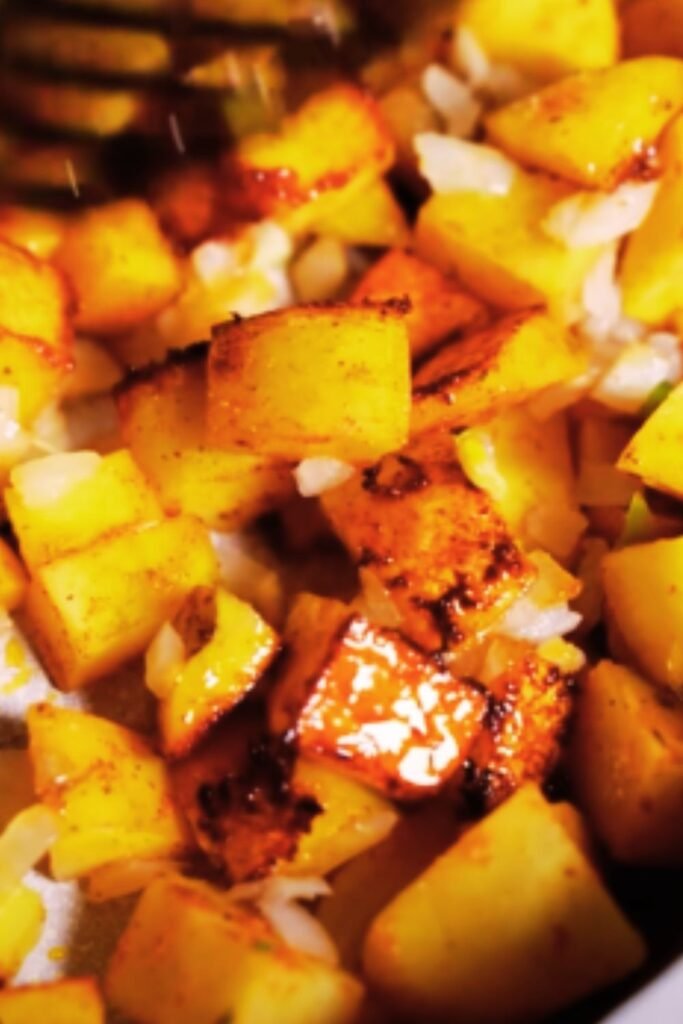
Serving Suggestions and Pairings
Classic Breakfast Combinations
- Scrambled eggs with cheese and fresh herbs
- Crispy bacon or breakfast sausage
- Fresh fruit salad for balance
- Buttered toast or English muffins
Brunch Elegance
- Eggs Benedict with hollandaise sauce
- Smoked salmon and cream cheese
- Fresh avocado slices
- Mixed greens salad
Dinner Transformation
- Grilled chicken or steak
- Roasted vegetables
- Simple green salad
- Dinner rolls
Make-Ahead Tips for Busy Mornings
Weekend Prep Strategy
- Parboil potatoes on Sunday
- Store dried, cooled potatoes in refrigerator
- Chop vegetables and store separately
- Mix seasoning blends in small containers
Freezer-Friendly Options
- Fully cook potatoes, cool completely
- Freeze in single-layer on baking sheets
- Transfer to freezer bags once solid
- Reheat directly from frozen in oven
Troubleshooting Guide
Problem: Potatoes stick to pan
Solution: Ensure pan is properly heated and use adequate oil. Don’t move potatoes too soon – let them develop a crust first.
Problem: Uneven browning
Solution: Cut potatoes uniformly and don’t overcrowd the pan. Cook in batches if necessary.
Problem: Potatoes fall apart
Solution: Don’t over-parboil initially. Potatoes should be tender but still hold their shape.
Problem: Lack of flavor
Solution: Season the parboiling water, season during cooking, and finish with fresh herbs.
Seasonal Variations
Spring Fresh
- Add asparagus spears and fresh peas
- Finish with lemon zest and fresh dill
- Include baby potatoes when available
Summer Garden
- Incorporate zucchini and yellow squash
- Add fresh corn kernels
- Finish with basil and cherry tomatoes
Fall Harvest
- Mix in butternut squash cubes
- Add caramelized onions
- Season with sage and thyme
Winter Comfort
- Include root vegetables like parsnips
- Add dried herbs and garlic
- Finish with sharp cheddar cheese
Questions and Answers
Q: Can I make breakfast potatoes without parboiling first?
Absolutely, but you’ll need to adjust your technique. Start with lower heat and cover the pan initially to steam the potatoes through, then remove the lid and increase heat for crisping. This method takes longer and may not achieve the same level of crispiness.
Q: What’s the best oil for cooking breakfast potatoes?
I prefer vegetable oil or canola oil for their high smoke points and neutral flavors. Olive oil works but can burn at high temperatures. Coconut oil adds interesting flavor but solidifies when cool.
Q: How do I keep breakfast potatoes warm for a crowd?
Transfer finished potatoes to a 200°F oven on a baking sheet lined with parchment paper. This keeps them warm without continuing to cook them.
Q: Can I use sweet potatoes instead of regular potatoes?
Yes, but sweet potatoes cook faster and have different starch content. Reduce parboiling time to 5-6 minutes and watch carefully during frying as they can burn more easily.
Q: Why do my potatoes turn mushy?
This usually happens from over-parboiling or using too much moisture during cooking. Make sure potatoes are just fork-tender after parboiling and thoroughly dried before frying.
Q: How far ahead can I prep breakfast potatoes?
You can parboil potatoes up to 2 days ahead and store them covered in the refrigerator. For best results, bring them to room temperature before cooking.
Q: What’s the secret to restaurant-style breakfast potatoes?
Restaurants often use a combination of techniques: proper pre-cooking, high heat, adequate oil, and most importantly, they don’t move the potatoes around too much during cooking.
Q: Can I make these in an air fryer?
Definitely! After parboiling and drying, toss with oil and seasonings, then air fry at 400°F for 15-20 minutes, shaking the basket every 5 minutes.
Q: How do I prevent my breakfast potatoes from being greasy?
Use just enough oil to coat the pan, ensure your oil is hot before adding potatoes, and drain finished potatoes on paper towels if needed.
Q: What’s the difference between breakfast potatoes and hash browns?
Breakfast potatoes are cubed and typically include vegetables and seasonings, while hash browns are grated or shredded potatoes formed into patties or loose piles.
These bangin’ breakfast potatoes have become my signature dish, and I hope they become yours too. The key is patience during the initial steps and confidence during the cooking process. Once you master these techniques, you’ll never settle for mediocre breakfast potatoes again. Every crispy, golden bite will remind you why taking the time to do things right makes all the difference in the kitchen.

